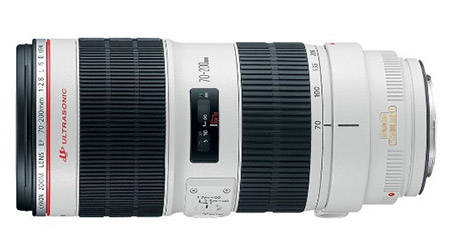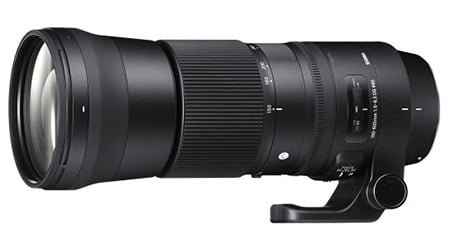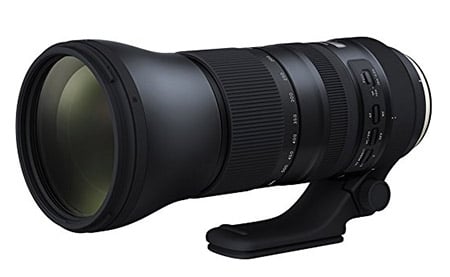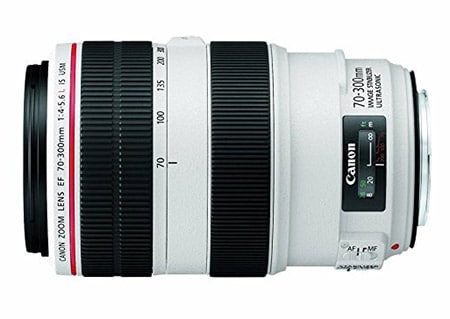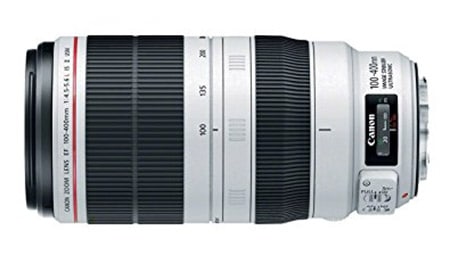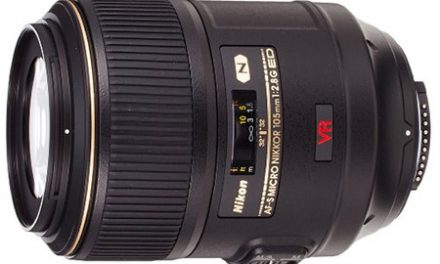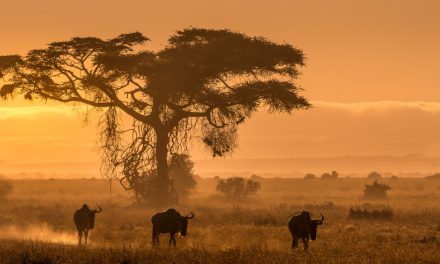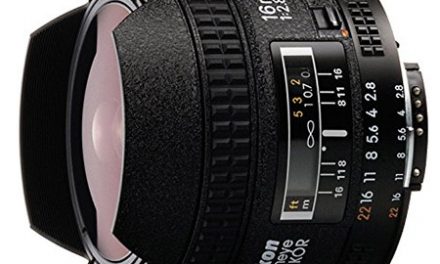The wide-angle lens may be used more often in landscape photography, but there will certainly be times when a telephoto lens is needed to get the photo that you want. When it comes to deciding which telephoto lens to buy, there is no shortage of options. Since a quality telephoto lens isn’t cheap, it pays to do some research and make sure that you are picking the best one for you.
With that in mind, we’ve put together this list of recommended telephoto lenses for Canon users.
All of the lenses we have selected for this list are telephoto zooms. There are prime lenses available as well, rating one prime vs. another is more challenging because getting the right focal length for your needs is probably the most critical factor in the decision. We also find telephoto zooms to be more practical and flexible.
Canon offers a few telephoto lenses in their L series that are extremely expensive. Since those lenses are out of the budget for even most professionals, we’re skipping any lens that is priced more like a car than a lens.
You may be interested in other articles in this series:
- Reviews of the Best Standard Zoom Lenses for Canon DSLRs
- Reviews of the Best Wide Angle Lenses for Canon DSLRs
- Reviews of the Best Macro Lenses for Canon DSLRs
- Reviews of the Best Fisheye Lenses for Canon DSLRs
- The Best Lenses for Landscape Photography
The Best Telephoto Lenses for Canon
5. Sigma 150-600mm f/5-6.3 DG OS HSM Contemporary Lens
The first lens we’ll mention is a third-party lens made by Sigma. There are some high-quality third-party lenses that allow you to get a good lens without breaking the bank. This lens gives you a huge focal length range with the ability to go from 150-600mm.
The extreme reach of this lens gives you plenty of potentials. The max aperture varies from f/5 to f/6.3, depending on the focal length you are using. This lens features image stabilization and weighs in at just over 4 pounds, which is heavy, but reasonable for the focal length.
- For full frame or APS-C sensors
- focal range: 150-600mm
- aperture range: f/5 – f/22
- image stabilization: yes
- 95mm front filter diameter
- weight: 4.3 lbs.
4. Tamron SP 150-600mm f/5-6.3 Di VC USD G2 Lens
This one is very comparable to the Sigma lens, but made by Tamron and costs a few hundred dollars more. Still, it is a good price for a lens of this quality in the telephoto to super-telephoto category. Like the Sigma lens, it also gives you the range from 150-600mm with a max aperture that varies from f/5 to f/6.3.
This lens also features image stabilization and is about the same weight as the Sigma lens, although just slightly heavier. The reasons we’ve rated this one ahead of the Sigma are overall image quality and the minimum aperture, which goes all the way to f/40. If you’re looking to save a few hundred dollars you can always go with the older generation version of this lens.
- For full frame or APS-C sensors
- focal range: 150-600mm
- aperture range: f/5 – f/40
- image stabilization: yes
- 95mm front filter diameter
- weight: 4.42 lbs.
3. Canon EF 70-300mm f/4-5.6L IS USM Lens
No, moving on from the third-party lenses we come to a great option made by Canon. This lens gives you a nice range from 70-300mm and very high image quality and sharpness, which you would expect from a lens in Canon’s L series. The max aperture is slightly better than the lenses previously mentioned, while the minimum aperture goes all the way to f/45. This lens also has image stabilization. It can be used with a removable tripod collar but does not come with one.
At less than 2.5 pounds, it is much lighter than the previous lenses as well. The price of this lens is comparable to the Tamron lens we have ranked at #4.
- For full frame or APS-C sensors
- focal range: 70-300mm
- aperture range: f/4 – f/45
- image stabilization: yes
- 67mm front filter diameter
- weight: 3.5 lbs.
2. Canon EF 100-400mm f/4-5.6L IS II USM Lens
Now we start to step up in price. This one is more expensive than the previous lenses, but still reasonable, especially for professionals. This lens gives a little more reach than the previous lens by going all the way to 400mm, and the max aperture is the same.
The image quality of this lens is outstanding. It is the same weight as the Canon EF 70-300mm f/4-5.6L.
If you like this lens but the price is out of reach, there is another option. You can save a few hundred dollars by opting for the older generation of the same lens. Of course, the newer generation has some upgrades in terms of technology and quality, but the older lens is still very good.
- For full frame or APS-C sensors
- focal range: 100-400mm
- aperture range: f/4 – 40
- image stabilization: yes
- 77mm front filter diameter
- weight: 3.5 lbs.
1. Canon EF 70-200mm f/2.8L IS II USM Lens
Now we come to our top-rated lens on this list, the Canon EF 70-20mm f/2.8L IS II USM. This lens is loved by many photographers for its outstanding quality and sharpness. The range is shorter than the others on this list, going only to 200mm.
However, if you need more reach this lens will produce quality images with a teleconverter. The max aperture of f/2.8 is a big upgrade over every other lens on this list, although that may not be critical for most landscape photography. It features image stabilization and is about the same weight as the lens we have rated #2 and #3. The price is about the same as our #2 rated lens.
While it is no small amount of money, it is a reachable price for many photographers.
- For full frame or APS-C sensors
- focal range: 70-200mm
- aperture range: f/2.8 – 32
- image stabilization: yes
- 77mm front filter diameter
- weight: 3.28 lbs.
If you really like the 70-200mm but can’t afford this one, you do have some other options. First, you could go with the older generation version of the same lens and save several hundred dollars, which is still a quality lens. Next, if the max aperture of f/2.8 isn’t important to you, you could opt for the Canon EF 70-200mm f/4L USM, which is a bargain for an L series lens.
There are also some third party options. The Tamron SP 70-200mm f/2.8 Di VC USD G2 is a quality lens at a much lower price than the Canon equivalent. The Sigma 70-200mm f/2.8 APO EX DG HSM OS FLD is priced about the same as the Tamron and is also a quality lens
Choosing the Right Telephoto Lens for You
When it comes time to decide on a lens to buy there are several factors that you will need to keep in mind. First of all, the budget is always a factor. Our top 3 rated lens, all in the Canon L series, are all priced comparably. The Tamron and Sigma lenses ranked 4 and 5 on our list will save you some money while still giving you a quality lens.
With the Canon lenses, in some cases, you can save a few hundred dollars by opting for the older version of the lens. The older versions are still good quality, even if they are not 100% as good as the latest versions.
You’ll also want to consider the maximum aperture that you are likely to need. For example, our number 1 rated lens offers a max aperture of f/2.8, while some of the others offer a max aperture of f/4-5.6. This may or may not be a big issue for landscape photography, but it is something to consider.
Of course, you’ll also want to determine just how much reach you need. The lenses on this list reach anywhere from 200mm to 600mm, which is obviously a big difference. Keep in mind that you can also use a teleconverter if you need a little more reach.
Ultimately, there is no right or wrong choice.
Are you a Nikon user? See our Reviews of the Best Telephoto Lenses for Nikon DSLRs.
Tips for Shooting Landscapes With a Telephoto Lens
When you’re heading out to capture some landscapes, you probably reach for your wide-angle lens.
But what if you were to use a telephoto instead?
Wide angles are the go-to lens of choice for most landscape photographers –and for good reason. These lenses tend to accentuate the sense of distance and scale in an image, emphasizing the space between the foreground and the background, as well as the size difference between objects that are close –and far away.
But just because wide angles can be great, doesn’t mean that you’ll want to overlook the value of a telephoto.
Unlike wide angles, telephotos cause foreground and background objects to appear similar in size, minimizing the sense of distance in an image. Because of this compression effect, these lenses are great for situations where you want all of the elements in an image to appear to be at a similar distance –rather than near –and farther away. Additionally, telephotos are great for those times where you want to get up close to something that’s far away, making them ideal for situations where you want to “reach out into the distance” and capture a specific piece of the setting.
Using a telephoto allows you to capture a significantly different type of photograph, but it’s a fascinating difference and one that’s worth exploring. If you’re curious about shooting landscapes with a telephoto, here are some tips to help you get the most out of this type of lens.
→ Related reading: Reviews of the Best Telephoto Lenses for Canon DSLRs and Reviews of the Best Telephoto Lenses for Nikon DSLRs.
Isolate Your Subject
While a wide-angle is great for those times where you want to create a picture with lots of foreground, if you want the focus to be on a point in the distance, a telephoto is your best option. With a wide-angle, it’s easy for distant subjects to be lost in a composition, but a telephoto allows you to isolate a distant subject or focal point. This is perfect for capturing a sailboat at sea, for example, or a house in the distance.
Simplify Your Composition
Telephotos are great for those times where you have a busy foreground that you’d rather leave out of the image. For instance, if you’re standing at a vantage point overlooking a town, and you’d rather just capture the mountain in the distance, using a telephoto will allow you to bypass the clutter in the foreground to focus on the mountain instead, allowing you to simplify your compositions.
Capture the Light
Landscapes that are taken during flat lighting conditions tend to look dull and uninspiring. But when the lighting’s at its best, telephotos are a great choice. These lenses are great for emphasizing particles that are in the air –such as mist, haze, and dust.
They’re also ideal for drawing out one section of the sky –such as clouds or mist, or capturing a part of the land where the light is especially beautiful, allowing you to make it the focal point of the image.
Compress the Elements in a Scene
Telephotos are great for compressing elements in a scene, that is, making distant and near objects appear closer together. This is perfect for those times where you want the elements that are farther away to appear to be a similar size to objects in the foreground, rather than small, and distant.
This is especially ideal if your main point of interest –such as a bridge or boat, would look better if a distant mountain, hill, or other element were pulled in a bit closer.
Look for Patterns
Since a telephoto makes it easier to simplify your landscape compositions, you can use it for situations where you want to cut through the details and focus on a specific focal point. This makes it ideal for photographing patterns, shapes, and textures found in nature, for example –ocean waves, ripples in the sand, or a series of trees in a forest.
Create Panoramas
Telephotos can be great for creating panoramas. With telephoto, there’s very little image distortion, which means that you can zoom in on aspects of the landscape that you’d like to capture and photograph a series of images that you can stitch together in post-processing later on.
→ Related reading: Guide to Shooting Panoramics
Camera Tips for Using a Telephoto
1. Stabilize Your Camera
You’ll want to take special care to steady your camera when using a telephoto. Since these photos contain a great deal of detail, even the slightest movement can cause the image to be off. Be sure to use a tripod to stabilize the camera, and make sure you switch off any image stabilization features.
While these settings work great when holding your camera by hand, when using a tripod, they can cause the camera to shake.
→ Related reading: 11 Steps to Tack Sharp Landscape Photos
2. Consider Depth of Field
While most landscapes call for narrow apertures and a wide depth of field, sometimes it pays to open the aperture up and create some blur. When composing your shots, pay close attention to the subject, and determine whether the composition should be clear and sharp, or whether it would benefit from selective focus. A telephoto lens with a wide aperture makes selective background and foreground blur easy to do.
→ Related reading: Why Shoot in Aperture Priority Mode
3. Use Filters
When using a telephoto lens, there’s a chance that different parts of your image will require different exposures. For this reason, it’s a good idea to get some neutral density (ND) filters that will fit your lens –or, adapter rings so that your wide-angle filters will fit your telephoto. Alternatively, you could also consider doing bracketed exposures; exposing the sky and the land separately, and then blending them together in post-processing.
Which lens is best for landscape photography –a wide-angle, or telephoto? The answer is: it depends on what you’re trying to capture. While wide angles are the go-to lens when you’re looking to create sweeping landscapes that feature lots of great foreground, telephotos are ideal for those times when you want to isolate a specific part of the landscape or bring a distant element forward.
Being able to work with both lenses will open up your options, allowing you to capture some amazing landscape images –no matter what type of composition the setting calls for.
→ Related reading: The Best Lenses for Landscape Photography
Do you enjoy using a telephoto lens for landscape photography? Share your images –and tips with us in the comments!

